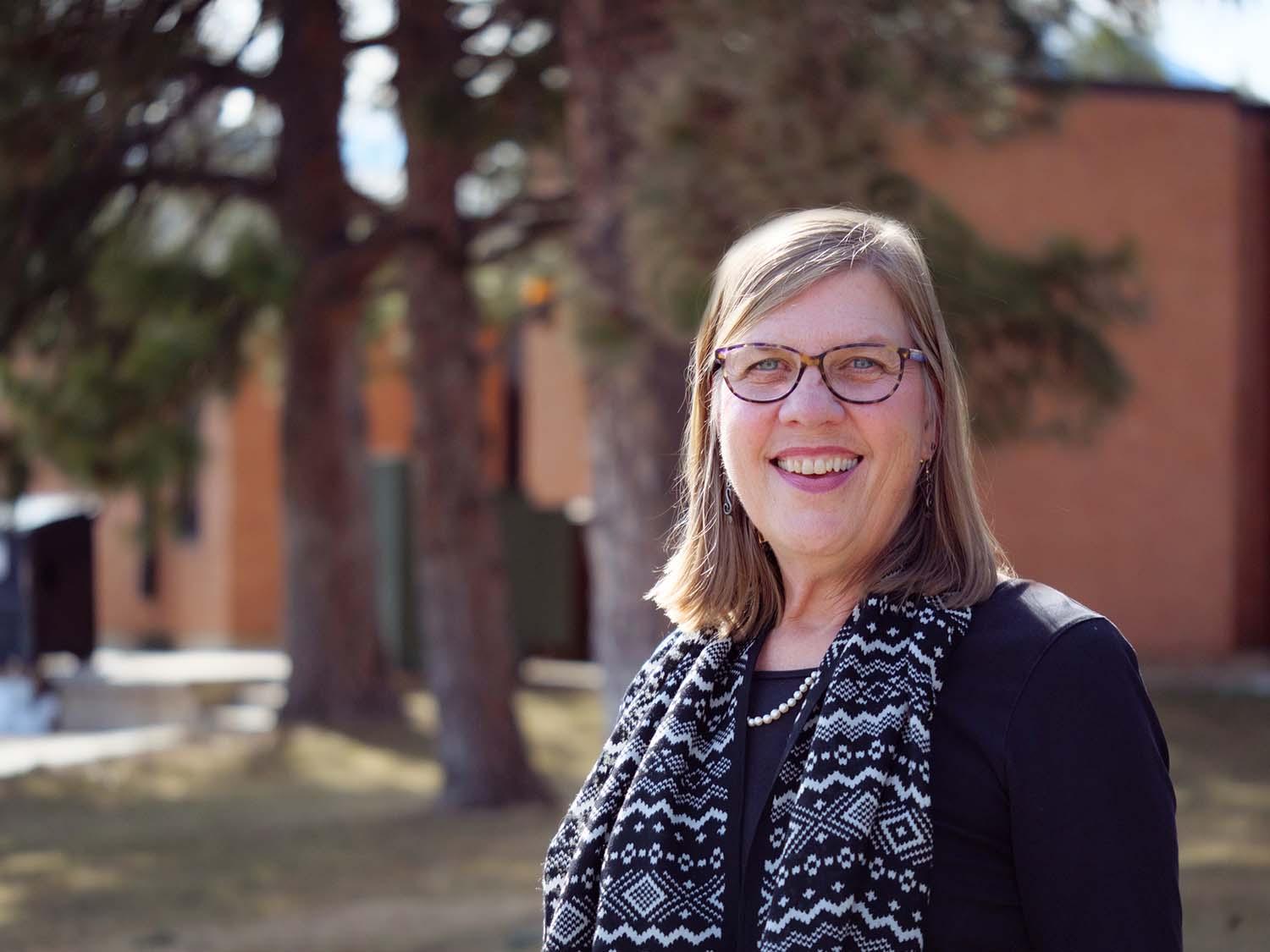Five Questions with Heidi VanGenderen, Co-Chair of the Right Here Right Now Global Climate Summit
We pose five questions to another co-chair of the Right Here, Right Now Global Climate Summit steering committee: Heidi VanGenderen.
Heidi VanGenderen is CU Boulder’s first chief sustainability officer and an expert in environmental sustainability. She has years of experience developing sustainable strategies at the local, state, national and international levels, including her term as senior energy advisor for the Worldwatch Institute.
Why is the Right Here, Right Now Global Climate Summit so important?
The University of Colorado Boulder is co-hosting a global climate summit with United Nations Human Rights that frames the climate crisis through the lens of the human rights crisis. Climate is arguably the greatest imperative in the history of our species on the planet. The necessity for us to address it is immense, and the opportunity to co-host a summit that will bring together thought leaders from the public sector, the private sector and civil society, as convened and contributed to by academia, is a remarkable opportunity for us.
Why is it so important that we understand and respond to the human rights effects of climate change?
Human contribution to climate change is well documented, yet we have not paid as much attention to the direct impacts of our changing climate on human beings. Climate change is affecting the most vulnerable populations on the planet most severely, whether it's the very young, the very old, the sick and disabled, or people who live in island nations that will literally disappear as sea level rise occurs. So many aspects of the reality of climate change center on the most vulnerable populations. There is a whole legal construct through the United Nations and elsewhere on human rights that is built around the rights of people to clean water, to adequate food, to shelter, to the ability to live a productive life through work and education—all of which are imperiled by a changing climate.
How are you dealing with the carbon footprint of putting on a summit like this?
There is a bit of an irony in the climate world for global summits that also produce a significant carbon footprint. We have been very aware of that from the outset.
For this summit, we hope to have as many of the thought leaders who are actually speakers and participants as panelists in the summit come to Boulder so that they can also be in community among one another. For those participants, travel will be offset. The cross-fertilization between the sectors is a key ingredient in coming forward with policy innovations, technology, deployment strategies, financing strategies, the solution side to how we're going to advance climate solutions at sufficient speed and scale.
We will also encourage and partner with universities around the world who can bring together thought leaders and activists in local communities. They will be able, through the miracle of technology, to tap into the summit in Boulder and will also be able to conduct local conversations focused on actionable solutions in each of their communities.
Why is CU Boulder the perfect university partner for this summit?
CU Boulder has some of the premier climate research underway of any university in the world. We are part of the University Climate Change Coalition (UC3), thanks to Chancellor Phil DiStefano, who joined these 23 North American top-tier research universities, all of whom are working to advance climate science and climate solutions. So many of the institutes on our campus—Cooperative Institute for Research in Environmental Sciences (CIRES), Institute of Arctic and Alpine Research (INSTAAR), Renewable and Sustainable Energy Institute (RASEI) and projects like ASPIRE (Advancing Sustainability through Powered Infrastructure for Roadway Electrification)—contribute to our capacities in this arena.
In the array of research on the solution side, there is such a variety of amazing work being done. For example, engineering Professor Wil Srubar and team have developed a bio brick or block that not not only doesn’t contribute to increased atmospheric concentrations of greenhouse gases but actually draws carbon from the atmosphere and holds that carbon in place. Exponential efficiency gains in solar cells, development of bio-based jet fuels, fuel cell advances with an aim toward a renewable hydrogen energy economy . . . the list goes on! The innovation and expertise demonstrated in CU’s applied research is just mind-boggling. And so hopeful. We can't put all of our eggs in the technology basket, but it's a big part of it.
What will it really take for us as a species to tackle what often seems like an insurmountable issue: human-caused climate change?
I think about history all the time and recognize that it really might require a World War II-scale effort that mobilizes so many aspects of our society to pull this off. The policy, the research and development, the investments, the political will . . . all are key ingredients. What on earth can galvanize that? We live in an increasingly complex world made up of nearly 8 billion of us. We need to lay out a realistic landscape and create and implement one of the most innovative but sound business plans ever created. In the immediate term, however, we can each take steps in our own lives—in how we participate as consumers and citizens. As Dave Matthews sings in You Might Die Trying: “To change the world/Start with one step/And however small/The first step is hardest of all . . . .”



